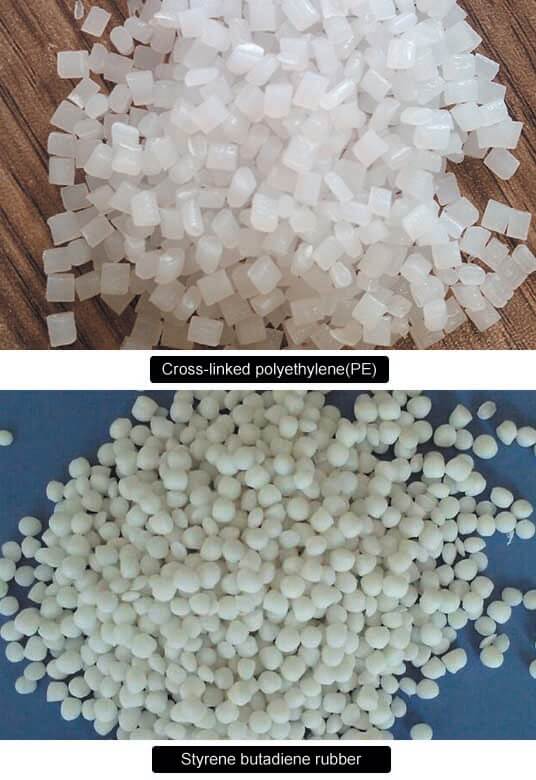19
Jan
What are the properties of plastics and rubber commonly used for wires and cables
Share:
Commonly used plastics for wires and cables mainly include: polyethylene, cross-linked polyethylene, polyvinyl chloride, polypropylene, polyolefin, fluoroplastics, nylon, etc.

1.Polyethylene
Polyethylene is currently the most widely used, the largest amount of plastic, data from the table, polyethylene meson loss is small, high resistivity, high breakdown field strength, weather resistance, good technology, is the best electrical insulation material.
2.Cross-linked polyethylene(PE)
PE is an excellent thermosetting insulation material formed by adding crosslinking agent to low density polyethylene (LDPE). Improved mechanical properties, weather resistance and allowable working temperature, so as to become the current power cable the best insulation material.
3.Polyvinyl chloride (PVC)
PVC has good physical and mechanical properties and excellent process properties. It is the most widely used plastic in the 20th century, and is also the main insulating material and sheath material for low-voltage wires and cables.
Fluoroplastic due to high working temperature, small medium, and insulation, weather resistance, acid and alkaline resistance, oil resistance, flame retardant and many other advantages, in the wire and cable is increasingly widely used.
The rubber used for wire and cable mainly includes natural rubber, styrene butadiene rubber, ethylene propylene rubber, mixed silicone rubber and so on.
1.Styrene butadiene rubber
It is made by polymerization of styrene and styrene. Domestic commonly used is domestic rosin soft butadiene -30A, equivalent to international model No. 1500 and no. 1503. Electric insulation performance is good, but not as natural rubber, hot oxygen aging resistance is better than natural rubber, but the ozone resistance worse than natural rubber, has certain elasticity, but not as natural rubber and abrasion resistance is better than that of natural rubber, but against sexual flexing resistance, cold-resistant performance than natural rubber, processing performance is poor, viscosity and large shrinkage, grinding, squeeze hard, in the wire and cable, styrene-butadiene rubber and natural rubber in a certain proportion to use.
2.Epdm rubber
Epdm rubber is divided into binary epDM rubber and epDM rubber. Excellent electrical insulation performance. Good heat resistance, good ozone resistance, good weather resistance, good cold resistance, good chemical resistance.
3.Mixed silicone rubber
It is a kind of excellent comprehensive properties of synthetic rubber, excellent thermal stability, high and low temperature resistance, can at 60 ℃ ~ + 250 ℃ condition for a long time work, ozone resistance, weather resistance and good electric performance, corona resistance, arc, edm is extremely strong, with chemical stability, weathering resistance, resistance to radiation, have the characteristics of physiological inertia, permeability is good.
More information please visit https://www.tanocable.com/products/ TANO CABLE will provide the best support for you!

1.Polyethylene
Polyethylene is currently the most widely used, the largest amount of plastic, data from the table, polyethylene meson loss is small, high resistivity, high breakdown field strength, weather resistance, good technology, is the best electrical insulation material.
2.Cross-linked polyethylene(PE)
PE is an excellent thermosetting insulation material formed by adding crosslinking agent to low density polyethylene (LDPE). Improved mechanical properties, weather resistance and allowable working temperature, so as to become the current power cable the best insulation material.
3.Polyvinyl chloride (PVC)
PVC has good physical and mechanical properties and excellent process properties. It is the most widely used plastic in the 20th century, and is also the main insulating material and sheath material for low-voltage wires and cables.
Fluoroplastic due to high working temperature, small medium, and insulation, weather resistance, acid and alkaline resistance, oil resistance, flame retardant and many other advantages, in the wire and cable is increasingly widely used.
The rubber used for wire and cable mainly includes natural rubber, styrene butadiene rubber, ethylene propylene rubber, mixed silicone rubber and so on.
1.Styrene butadiene rubber
It is made by polymerization of styrene and styrene. Domestic commonly used is domestic rosin soft butadiene -30A, equivalent to international model No. 1500 and no. 1503. Electric insulation performance is good, but not as natural rubber, hot oxygen aging resistance is better than natural rubber, but the ozone resistance worse than natural rubber, has certain elasticity, but not as natural rubber and abrasion resistance is better than that of natural rubber, but against sexual flexing resistance, cold-resistant performance than natural rubber, processing performance is poor, viscosity and large shrinkage, grinding, squeeze hard, in the wire and cable, styrene-butadiene rubber and natural rubber in a certain proportion to use.
2.Epdm rubber
Epdm rubber is divided into binary epDM rubber and epDM rubber. Excellent electrical insulation performance. Good heat resistance, good ozone resistance, good weather resistance, good cold resistance, good chemical resistance.
3.Mixed silicone rubber
It is a kind of excellent comprehensive properties of synthetic rubber, excellent thermal stability, high and low temperature resistance, can at 60 ℃ ~ + 250 ℃ condition for a long time work, ozone resistance, weather resistance and good electric performance, corona resistance, arc, edm is extremely strong, with chemical stability, weathering resistance, resistance to radiation, have the characteristics of physiological inertia, permeability is good.
More information please visit https://www.tanocable.com/products/ TANO CABLE will provide the best support for you!
Previous article:
Next article:




